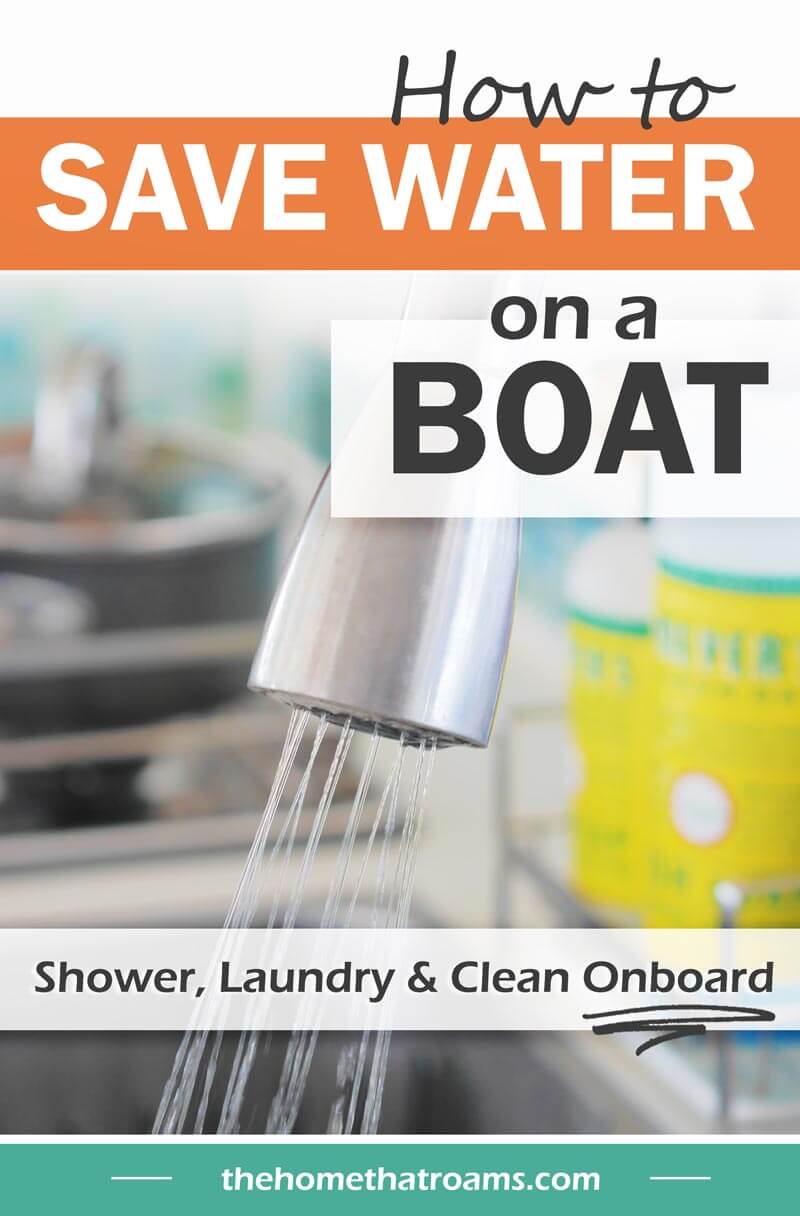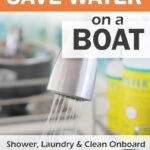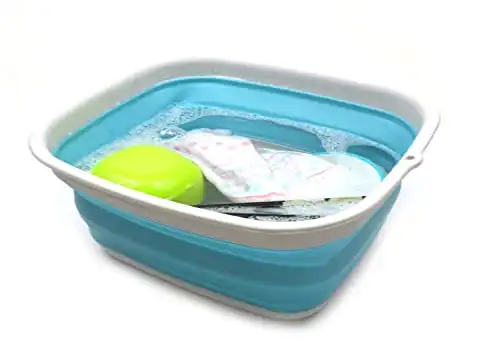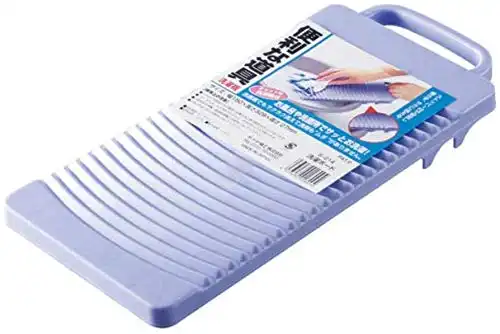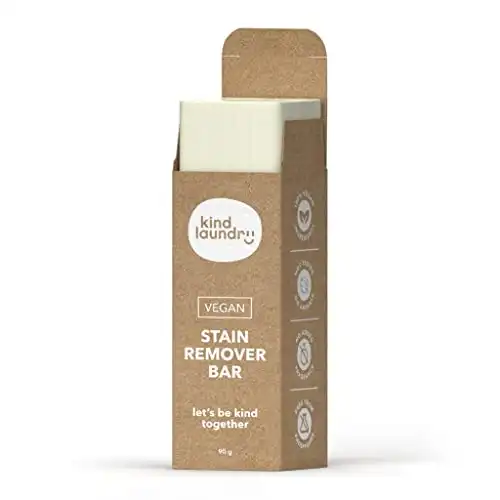How to Save Water on a Boat
As an Amazon Associate, we earn from qualifying purchases. We also earn from other affiliate websites. See our full disclaimer.
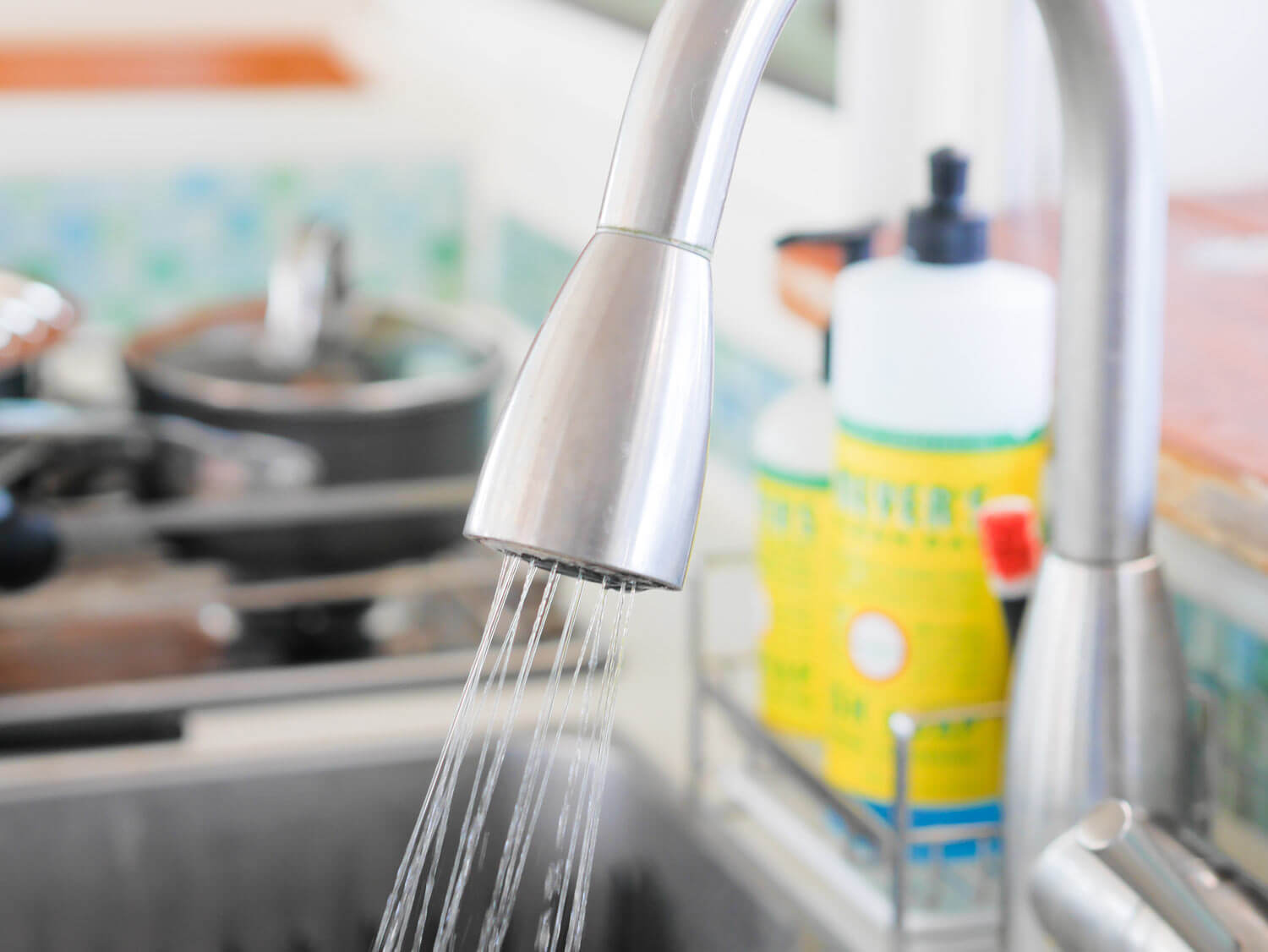
When you’re cruising, and the boat is off the dock, conserving water is a constant challenge.
From showering to washing dishes and even flushing the toilet – it’s an ongoing battle trying to save water on a boat. So much so that even the saltiest sailors say they would consider buying a watermaker for their boat.
Even with two 80-gallon water tanks, we had to drastically adjust our usage habits to stay out of the marina. Learning to stretch our water supply was a priority once we cast off the dock lines.
Cleaning is the biggest consumption of water on a sailboat. Showering, washing dishes, and laundry all use a lot of water on board. Adapting to use less water in these areas allows you to stay off-grid longer and more time in places you love.
Below you’ll find helpful tips for conserving water in these three areas.
Showering on a Boat
Did you know the average American uses 17.2 gallons of water to take a shower? Man, that water goes fast on land! 17 gallons is our total water usage for two days onboard Sunnyside.
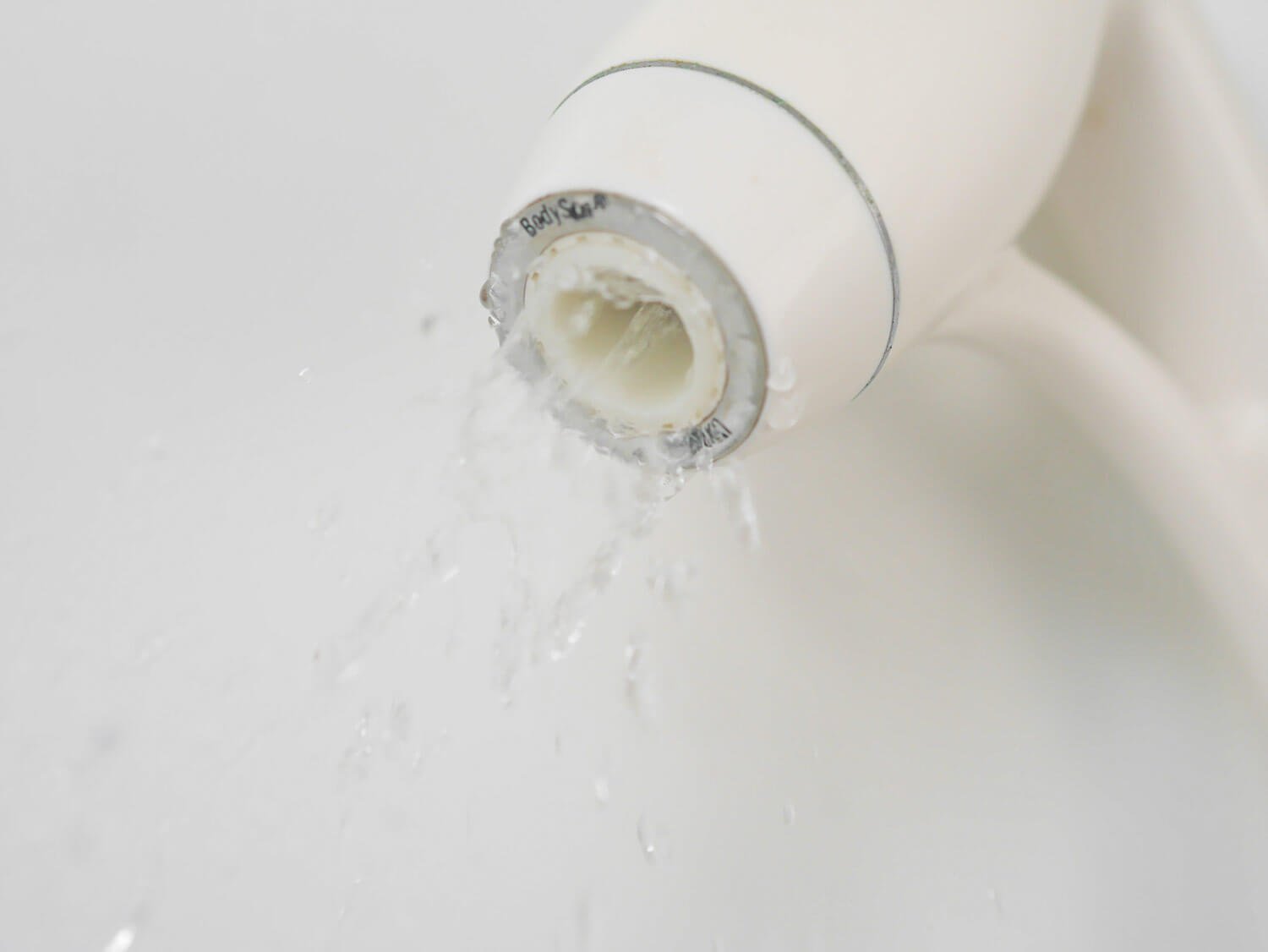
Cleaning your body, even to ensure it’s only mildly smelly, takes a little more work than when you were a land dweller. Here are four things you can do to minimize water usage when showering on a boat.
4 Tips to Shower with Less Water
Living on a boat, you quickly learn the joys of a “Navy Shower.” Wet down and turn the water off — soap up. Turn the water on to rinse. All while using a minimal amount of water.
This process, along with a few other tricks, will help you get your shower water usage down to 1-2 gallons of water.
- Invest in a water-efficient showerhead. We upgraded to an Oxygenics showerhead to save water and increase water pressure.
- Keep long hair clean. In subtropical or tropical climates, avoid washing your hair as often as your body. You might be sticky with sweat and sunscreen every night, but if you can keep your locks clean, it’ll save a ton of water. I keep my hair tucked in a UPF bandana (followed by a hat) most days. The bandana will keep hair out of the elements, and the cooling material wicks sweat. In the summer heat in the southeast, I can usually go for 4-5 days without washing my hair.
- Change up your routine to use fewer products. Investing in a leave-in conditioner or combined shampoo conditioner for your hair will save water. The water required to wash and rinse hair twice leads to extra water usage. We recommend trying different options before living aboard to find a regime that works for you.
- Bathe in the ocean. For the ultimate water savings in a tropical climate, jump into the ocean. Get in to wet down, back on the boat to scrub, jump in to rinse, and finish with a freshwater rinse on the transom.
Washing Dishes on a Boat
Showering gets a bad wrap as one of the largest uses of water on a boat. Yet, washing dishes can be just as heavy on water usage when you’re not prepared.
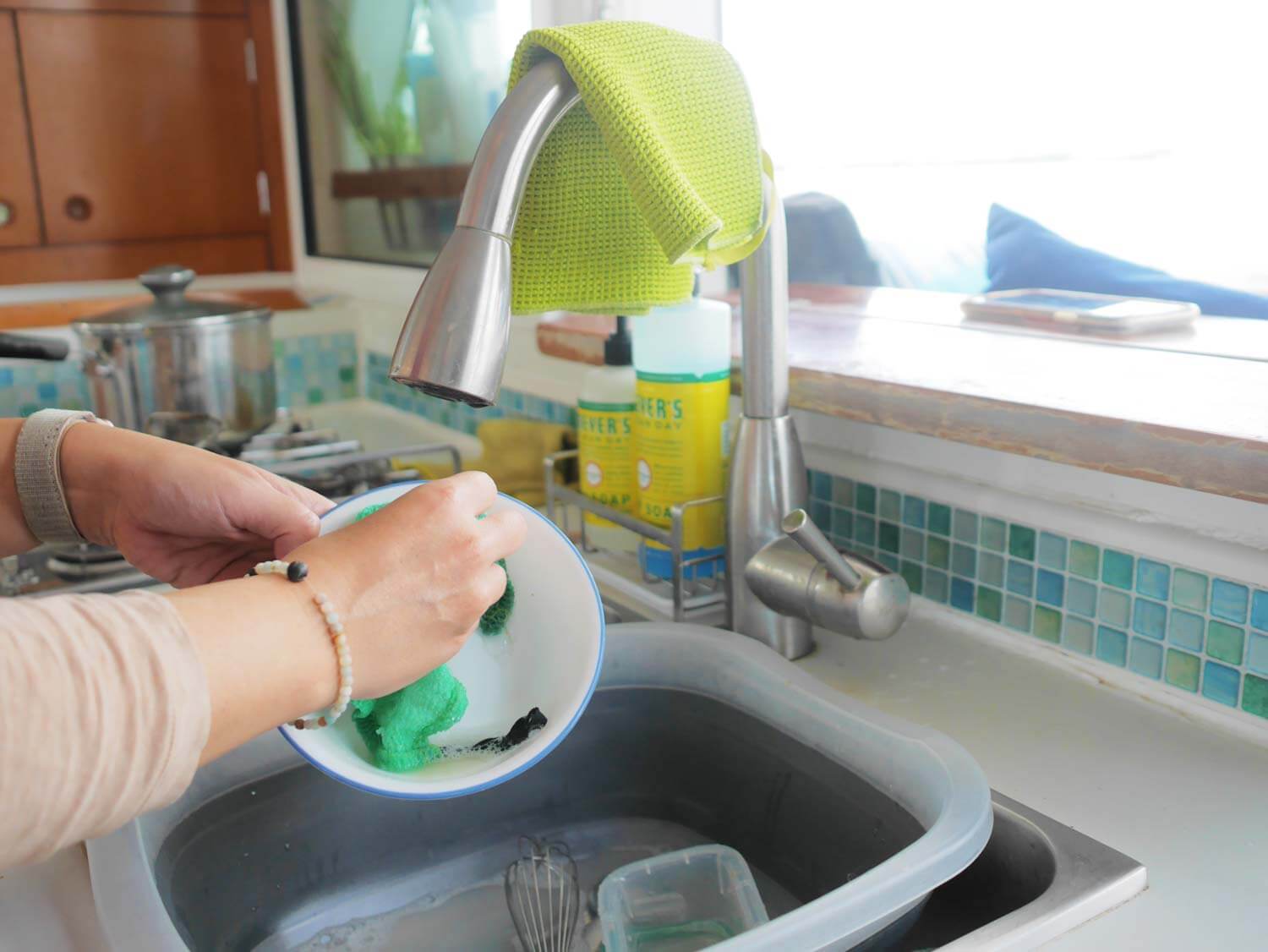
5 Tips for Washing Dishes Onboard
Here are five tips to ensure cleaning the dishes doesn’t drain your water tanks.
- Get a collapsible tub to put in the sink. Use this when washing dishes to soak and scrub your dishes. When we’re off the dock, this collapsible tub is always in the sink.
- Start with relatively clean dishes. This habit will evolve naturally as you do dishes on a boat. You’ll start scraping out pots, wiping leftovers from bowls, and occasionally licking a plate clean. The cleaner the dishes are when you start washing, the less water you will use.
- Use a small amount of dish soap. Use just enough soap to cut through food and grease — the less soap and suds, the less water you’ll need to rinse. Solid dish soap is a great option for minimizing suds.
- Install a faucet with a spray setting. Using the spray setting, you can turn the faucet about a quarter of the way on and still get a good rinse on the dishes.
- Invest in a saltwater foot pump. Venturing down to the sugar scoop for a saltwater dish rinse is an excellent way to save water. But it’s not always convenient or safe. With a saltwater foot pump at the sink, you can easily wash dishes in saltwater and rinse them with fresh.
Laundry on a Boat
Doing laundry by hand on a boat can be a tricky chore.
For a long time, I thought there was no way I could do laundry without a watermaker. Or we would have to dock to do laundry at least once every ten days.
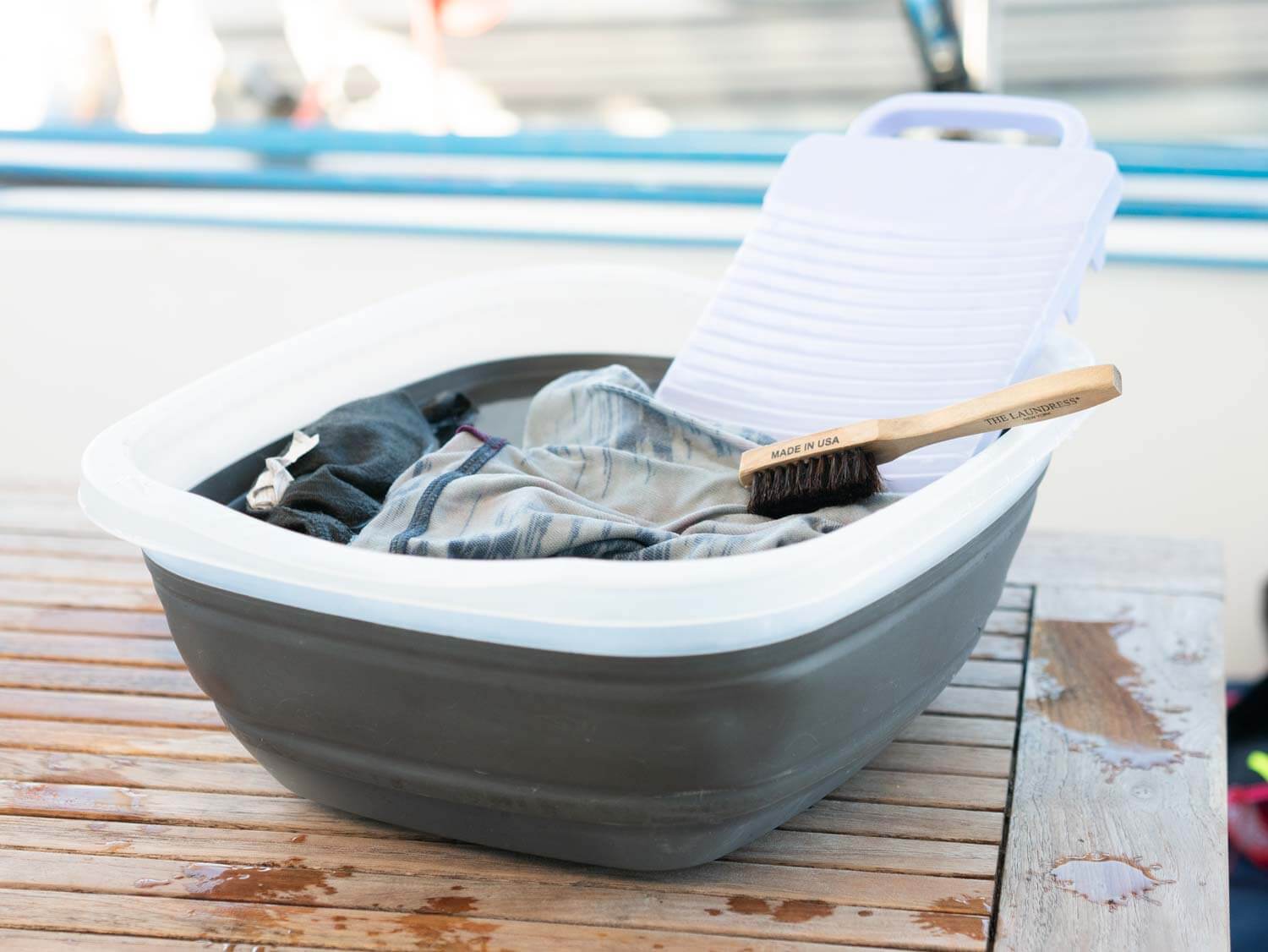
The goal is to find a balance between clean clothes and minimal water usage. And also to avoid wearing clothes that are bulky, heavy, or hard to dry.
What to Wear to Make Laundry Easier on a Boat
Quality synthetics are the preferable fabric on a boat. As much as we all love a comfy cotton shirt, it’s not ideal living on the water. You want clothing that doesn’t take up a lot of room in the wash bucket and is easy to dry.
Here are a few clothing items for subtropical climates that are easy to hand wash:
4 Tips for Doing Laundry Onboard
Besides wearing the right clothes, here are four pro tips to make laundry less intimating and easy on the water supply.
- Do small loads in a tub. Use a two-gallon collapsible tub to do a couple of small loads at a time. You can wash 3-4 lightweight clothing items and a few bathing suits in a small tub. A small washboard, a quality stain brush, and stain remover will help with dirt and sunscreen stains.
- Save dirtier items for the second wash. Once you have washed your less dirty clothes, you can do a small load of cleaning rags or work clothes in the same water.
- Use less soap. As with the dishes, you’ll want to use as little detergent as possible. It takes a small amount to hand wash clothing, just a dribble. I recommend a low sudsing detergent. Add a cap full of vinegar to your rinse water to help cut the remaining soap.
- Save bulky items for the washing machine. Heavier items such as sheets, hoodies, and jeans wash more efficiently in a machine. We keep an extra sheet set and wear jeans and hoodies multiple times before washing. When we go to the dock or have access to a washing machine, we wash these items.
READ MORE: For more tips on what clothing to wear on a boat, check out What to Wear Sailing: The Best Clothing for Comfort on a Boat.
Bonus: Ideas to Repurpose Water
On a boat, you never throw out “cleanish” water. There’s always a use for it.
- We use the cat’s stale drinking water to water herbs.
- Water used to rinse the tea jugs also becomes plant water or dishwater.
- Pasta water gets used to wash dishes.
- The cooler’s melted ice water becomes water to make more ice (make sure the cooler and its contents are clean).
Everyone has different habits of water usage, so get creative with your water-saving techniques.
Start Practicing Water Savings
One of the best things you can do to conserve water is to form good habits.
Turn off the faucet when you aren’t actively using it. Don’t wash clothes until they’re actually dirty. Be conscious of throwing water down the drain. Soon enough, saving water will become a part of your daily lifestyle.
Here are some other articles you might find helpful for saving water onboard.
- Tips for Conserving Water on a Boat – waterbornemag.com
- Bathing with Six Cups of Water – sailingbritican.com
Want more tips for cruising on a boat?
For a full guide to what it’s really like living on a boat and tips for living on the water, view our complete guide.
Like this post? Save it on Pinterest for later.
